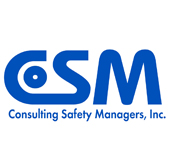Busting Workplace Injuries
Common Injury Trends
Reducing an injury trend, a high injury rate, or or expensive workers’ compensation costs often involves these common types of injuries:
Musculoskeletal Disorders (MSD’s)
The most common MSD’s we solve are attributed to manual material handling, poor design of human machine interfaces, and repetitive motion. We study how employees’ bodies interact with work stations and tasks. Then we identify a multi-faceted strategy to reduce stress on the body involving: safety engineering, human factors, behavior-based safety, and biomechanics.
The main symptom of MSD-induced overexertion is discomfort. An MSD often unfolds over time with discomfort leading to pain and injury. Having safety processes that can identify and address discomfort early is a major success factor when dealing with with MSD’s.
Machine or Equipment Injuries
The most common source of severe injuries we solve are operators and pedestrians interfacing with stationary machinery or material handling equipment. We evaluate the human machine interface and danger zones to understand and improve workplace design, machine safeguarding, hazardous energy control, human factors, and safe behaviors.
If your workplace has experienced a severe injury involving equipment, then the management system needs attention. We also recommend corrective actions to improve the safety processes for optimizing protection around equipment.
Slips, Trips, and Falls
Slips, trips, and falls are a severe type of injuries that often go unnoticed until it happens. A slip is when the feet slide out from other under body triggering a rear fall. A trip is when the foot or shoe toe strikes and object or floor surface defect triggering a forward fall. The mechanism of injury is the significant force of the body impacting the floor, especially when a person extends their arms to brace from the fall.
We identify the source of falls and how stop the trend with hazard controls, such as floor surface quality and friction, leading edge protection, housekeeping, illumination, hazard markings, task safety analysis, and proper footwear. We also can help adjust the safety processes to target and prevent slip, trip, and fall injuries.
Other Hazards
We also have experience solving common injury trends involving hand lacerations, chemicals, burns, vehicles, work at height, and several other types of hazards.
Solving Injuries
We apply a problem-solving process to solving injuries. Here is what we do:
Pinpoint the Trend
We gather the injury data from injury reports, employee interviews, and evaluating the workplace. Then we create a spreadsheet to display the injury characteristics and to uncover the causation.
Determine the Causation
We determine the causation. The best way is to study the work tasks sourcing the injuries. We’ll study the human factors, human behaviors, machinery and equipment, workplace, environment, and materials. We also interview employees and supervisors. These analyses help us determine the true causation behind the trend.
Implement the Action Plan
The last step is applying the right combination of the hierarchy of controls to control the injuries. Our founder is a safety engineer with an advanced degree. He’s adept at solutions which apply redundancies to reduce injury risk. We convert the solution into an action plan the safety staff or a safety committee can implement.
Results
We’ve helped organizations solve simple and complex injury trends, reducing injury costs, keeping employees happy, and decreasing injury rates.
